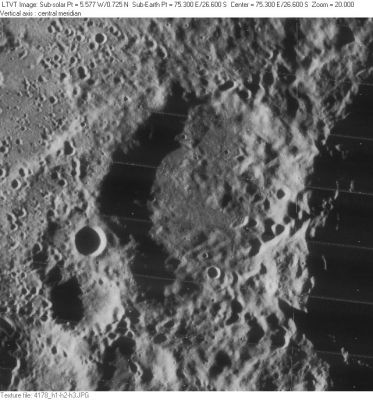Phillips
Contents
Phillips
|
Lat: 26.6°S, Long: 75.3°E, Diam: 122 km, Depth: 3.2 km, Rükl 60 |
Images
LPOD Photo Gallery Lunar Orbiter Images Apollo Images
Maps
(LAC zone 99D2) USGS Digital Atlas PDF
Description
Description: Elger
(IAU Directions) PHILLIPS.--Abuts on the W. side of W. Humboldt. It is a walled-plain, about 80 miles in length, with a border much broken on the W., and terraced within on the opposite side. There are many hills and ridges on the floor.
Description: Wikipedia
Additional Information
Depth data from Kurt Fisher database
- Cherrington, 1969: 3.2 km
Nomenclature
- Named for John Phillips (December 25, 1800 – April 24, 1874) a British geologist. In 1834 Phillips was elected a fellow of the Royal Society. Phillips spent some time in studying the Palaeozoic fossils of Devon, Cornwall and West Somerset, of which he published a descriptive memoir (1841). He also made a detailed survey of the region of the Malvern Hills, of which he prepared the elaborate account that appears in vol. ii. of the Memoirs of the Survey (1848). Phillips also made astronomical observations of the planet Mars during its 1862 opposition.
- The name Phillips (honoring "our great geological astronomer") was proposed by British amateur W. R. Birt in 1863, at which time there was apparently some confusion as to whether Beer and Mädler's name Humboldt referred to this crater or the larger one to its east.
- Perhaps we could also add T. E. R. Phillips (Theodore Evelyn Reece Phillips, 1868-1942, English astronomer). - DannyCaes Dec 13, 2014
- And maybe Samuel C. Phillips too... (1921-1990, Director of NASA's Apollo Manned Lunar Landing Program from 1964 to 1969). - DannyCaes Sep 10, 2015
- Phillips B was called Santacruz by Wilkins and Paluzie-Borrell, but the IAU did not accept the name. Alonso De Santa Cruz was a Spanish astronomer (1505-1567).
LPOD Articles
Bibliography
Phillips B ("Santacruz"): Wilkins and Moore.
T. E. R. Phillips (Theodore Evelyn Reece Phillips, the English astronomer) in the Sourcebook Project (William R. Corliss)
In Mysterious Universe, a handbook of astronomical anomalies (1979) :
- Page 511: Bright Objects observed near the Sun (W.H.Steavenson, Journal of the British Astronomical Association, 1914).
